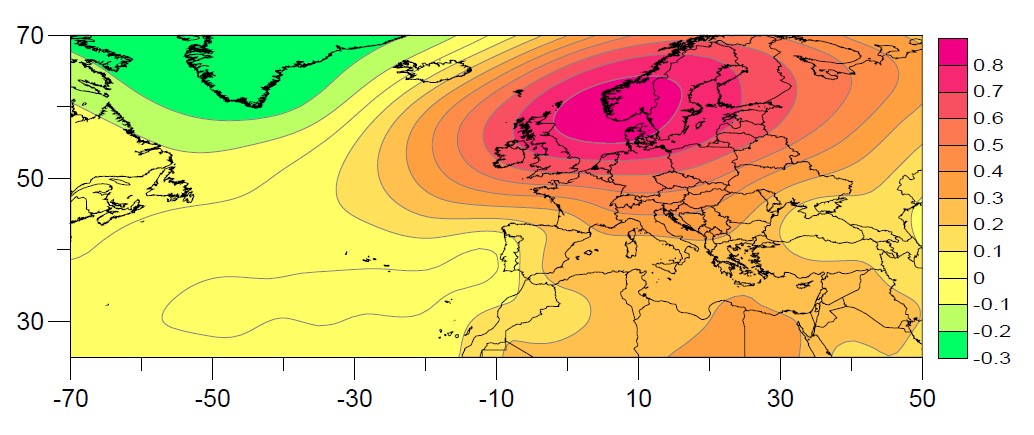MR. VICENT FAVÀ FIGUERES’ THESIS LECTURE


ABSTRACT:
The main objective of this thesis is to study the changes in temperature, precipitation and wind in the Iberian Peninsula (IP) that were derived from the sudden transition of the SNAO index (Summer North Atlantic Oscillation) towards a persistent positive phase in the late 60's of the twentieth century, as a result of the Rapid Global Climate Shift. To this end, NCEP / NCAR reanalysis data (National Centers for Environmental Prediction / National Center for Atmospheric Research) have been used together with several observational databases, mainly Spain02 (temperatures in mainland Spain) and E-OBS (European temperature and precipitation data). The principal component analysis (PCA) method has been implemented for the calculation of various atmospheric indices, and various nonparametric methods have been applied to estimate the significance of trends and correlations (Mann-Kendall and Block Bootstrap). In summary, this study has contemplated various regional analyses (influence on the maximum temperatures in the peninsular Spain and on rainfall in the NE) and various analyses at local scale (changes in wind direction at the Ebro, Ourense and Valencia observatories and its impact on maximum temperatures). The most relevant results have been found when comparing the climatic conditions of the period 1950-1966 with respect to those of the 70s and early 80s. It has been found that the negative values of SNAO for the period 1950-1966 were characterized not only by a high frequency of low pressure systems in northern Europe, but, because of their spatial arrangement, they influenced more than usual the conditions of northern IP. Four synoptic patterns have been found in which the way in which high pressures (positive SNAO) or low pressure areas (negative SNAO) are distributed in northern Europe, directly influences the kind of weather that can be expected in the north of the IP. On a regional scale it has been found that the negative SNAO values of the 50s and 60s were generally associated with a decrease in the vorticity in the SW and an increase in the NE, factors that contributed to raise the maximum temperatures in the area of the coast of Valencia and the SE of the IP. When SNAO changed to strongly positive values from the end of the 60s, this pattern of vorticities was reversed, resulting in an enhanced maritime flow, which contributed to the observed decrease in maximum temperatures and daily temperature range (DTR) in Valencia and in the SE coast of the IP between the end of the 60s and the beginning of the 80s. The negative SNAO index phase registered from the 50s to mid-60s were also associated with the formation of an anticyclonic nucleus on the Western Mediterranean, isolated from the Azores High. Between both high pressures systems, the IP remained in a barometric swamp that favored on the one hand the formation of thermal lows on the center-east of the IP and on the other, the arrival of warm moist air at the NE of the IP, factor that probably enhanced the formation of storms. In the period 1950-1966, rainfall in the NE of the IP showed significant correlations of negative sign with SNAO, of opposite sign to that obtained with the precipitation in the center of the IP in the period 1950-2010. It has also been found that in the period 1950-1966, the transitions from southerly to northerly flow in the NE of the IP contributed to precipitation more than in any other period, which is consistent with an enhanced frontal precipitation in this period.